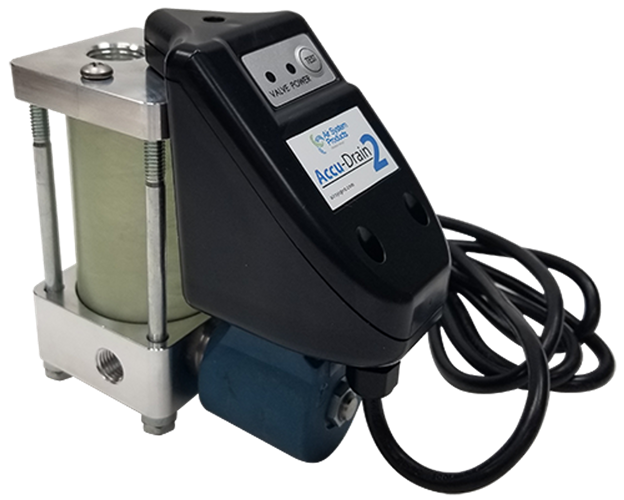Zero Loss Drain Valve Essentials for the Oil and G…
Posted by AVP on Aug 13th 2025
Compressed air might be the oil and gas industry's not-so-secret weapon, but it comes with a caveat. Beyond the pressure and flow rate battles, the true test of efficiency lies in capturing and managing the ubiquitous condensate – the enemy of productivity.
That’s where the zero-loss drain valve comes in.
Unlike traditional timer-based drains, which open at fixed intervals and waste compressed air even when no condensate is present, zero-loss drain valves operate only when needed. This makes them an essential component in ensuring efficiency, reducing energy consumption, and cutting unnecessary costs.
The Role of Zero Loss Drain Valves in On-Demand Operations
Condensate is an unavoidable byproduct of compressed air systems. Whether it’s moisture from ambient air, residual oil, or other contaminants, failing to remove condensate efficiently can lead to corrosion, decreased efficiency, and increased maintenance costs. Zero-loss drain valves provide a solution by operating only when condensate is detected, ensuring no compressed air is lost in the process. Here’s where they are most effective:
Condensate Accumulation in Key Components
- Aftercoolers: As compressed air leaves the compressor, it’s hot and carries significant moisture. Aftercoolers reduce the temperature, causing this moisture to condense. A zero-loss drain valve ensures that this water is efficiently removed without air loss.
- Air Receivers (Storage Tanks): These tanks store compressed air, but as the air cools, condensation forms. Without proper drainage, water buildup reduces storage capacity and increases corrosion risks. Zero-loss drain valves eliminate these issues by draining water only when necessary.
- Filters and Separators: Designed to remove contaminants from the air stream, these components accumulate condensate, which must be drained efficiently. Using zero-loss drain valves prevents unnecessary air loss while ensuring filters operate at peak efficiency.
- Dryers: While dryers work to remove moisture from compressed air, some residual condensate can still form. Zero-loss drains help maintain dryer performance by automatically removing accumulated moisture.
- Drip Legs and Low Points in Piping: Condensate naturally accumulates in low points of piping systems. Drip legs are installed to catch this moisture, and zero-loss drains provide automatic, energy-efficient removal.
Check out the Robo-Drain Zero Loss Drain Valves for reliable condensate management solutions.
How Zero Loss Drain Valves Work: Sensing and Actuation
Unlike traditional drains that work on timers, zero-loss drain valves operate based on condensate levels. Their function is built around three core processes:
- Level Sensing: Using float sensors, capacitive sensors, or similar technologies, these valves detect when condensate reaches a specified level.
- Valve Activation: When enough condensate accumulates, the valve opens just long enough to discharge the collected water.
- Automatic Closure: Once the condensate is removed, the valve shuts immediately to prevent compressed air loss.
The RD11-VAC Zero Loss Pneumatic Condensate Robo Drain Valve offers an advanced sensing mechanism for vacuum systems, ensuring no unnecessary air loss.
The Energy Efficiency Impact of Zero Loss Drain Valves
Energy efficiency is a critical focus in the oil and gas industry. Studies have highlighted the importance of effective condensate management in reducing overall energy waste in compressed air systems. Traditional timer-based drains waste compressed air, leading to increased energy costs and inefficiency.
Research reveals that embracing zero-loss drain valves can yield substantial energy savings by eliminating inefficient air leaks in compressed air systems. Significant cost savings are realized in the long run, all while avoiding compressor overload. In industries where compressed air makes up a large chunk of energy usage, better condensate drainage can mean real improvements in overall system performance.
Understanding Condensate Behavior in Compressed Air Systems
The behavior of condensate in compressed air systems is governed by two-phase flow principles, where liquid (condensate) interacts with gas (compressed air). What's the common thread behind many system failures? you guessed it: faulty drainage, which sets off a chain reaction of sketchy pressure and airflow that wreaks havoc on performance.
Condensate can accumulate in pipelines without proper drainage, leading to reduced flow efficiency and even damage to downstream equipment. Zero-loss drains mitigate these risks by removing moisture as soon as it forms, keeping compressed air systems running smoothly.
Meeting Energy Demands Efficiently
The oil and gas industry must improve energy efficiency while keeping operations effective. Compressed air is vital from exploration to refining. The challenge is to cut energy waste without lowering performance.
Environmental Regulations: Stricter emissions and energy use regulations require companies to adopt more efficient technologies.
Operational Costs: High energy consumption translates to increased costs, making efficiency solutions a necessity.
Equipment Longevity: Proper maintenance and efficient condensate management extend the lifespan of compressed air systems, reducing downtime and repair costs.
Zero-loss drain valves address these challenges by ensuring air compressors operate at peak efficiency, reducing unnecessary waste, and improving overall energy use.

The Role of Automatic Drain Valves in Oil and Gas Operations
Running a compressed air system in oil and gas applications can be a nightmare without automatic drain valves. They're the behind-the-scenes heroes that keep things humming along smoothly. Industrial toughness is no match for the Accu-Drain Zero Loss Condensate Drain Valve, thanks to its rugged posi-valve design that cranks up both durability and efficiency.
- Uninterrupted Operation: These valves prevent manual intervention, ensuring condensate is removed efficiently without stopping production.
- Cost Savings: By eliminating wasted compressed air, automatic zero-loss drains contribute to lower operational costs.
- Improved Safety: Proper condensate management prevents water buildup, reducing the risk of equipment failure and hazardous conditions.
Explore the Accu-Drain Zero Loss Condensate Drain Valve for a reliable condensate removal solution in oil and gas applications.
Maximizing Efficiency with Zero Loss Drain Valves
Energy efficiency is more than a cost-saving measure for the oil and gas industry—it’s a necessity. Managing condensate without wasting compressed air is one of the simplest yet most effective ways to optimize system performance. Zero-loss drain valves offer a practical solution, ensuring that compressed air remains in the system while unwanted moisture is efficiently removed.
Investing in high-quality zero-loss drain valves improves efficiency, extends equipment life, and contributes to significant cost savings. With a range of solutions available, from the Robo-Drain to the Accu-Drain, there’s an option to suit every compressed air system in the oil and gas sector.
